Code Vein (PS4) - Review
by
Kelsy Polnik
, posted on 10 October 2019
/ 5,812 ViewsThe souls-like genre of games is becoming a very crowded space lately. From 2D retro inspired takes on the formula, to spiritual successors, to other genres heavily borrowing the gameplay mechanics, to straight up copy cats, it’s starting to feel like there is a new one every month or two. It’s very easy to get burned out or overwhelmed by the choices if you enjoy the genre. And if you don’t enjoy it, or are new to the concept, it can be a challenge to discern the quality titles from the cash-ins. Code Vein stands proudly adjacent to the main Dark Souls series in my eyes. It borrows much from the inspiring series, but brings just as many new ideas to the table to set it apart from its rivals.
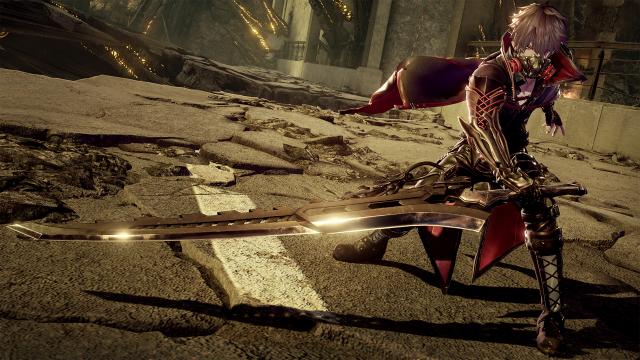
Before you even start the game you're tasked with creating the character for your adventure. The tools available to design the anime man or woman of your dreams are incredibly extensive. Just the color palette alone is a nearly endless variety of hues, sheens and patterns. The facial options let you design each eye separately, choose from scars, freckles, tattoos, masks, mouths, and more. Each piece of clothing, hat, glove, or any accessory is completely resizable and you can fully customize the color of each as well. Beyond just the ample selection of options it's pretty astounding how well finished characters actually look when completed. With the game being as visually stylized as it is I find it particularly impressive that no matter how minimal or ridiculous you are with your characters they fit well into the bizarre world of Code Vein.
The story of Code Vein is particularly outlandish and I loved every second of it. Some major catastrophe has occurred at an unknown, but recent, time prior to the start of the game. The world is largely in a decimated state. There are still some humans, but it doesn’t seem like there are many left and you’re not one of them. You and most of the people you encounter are something akin to vampires, called Revenants. Each Revenant wears a mask when outside, which filters the lingering violent miasma surrounding the world through a mixture of their own blood. Since the catastrophe there has been a vein of blood running underground and sprouting up in different areas as Bloodsprings. These Bloodsprings are vital for survival as they produce Blood Beads, which the revenant can feed off of. However, they're starting to dry up, so some are resorting to feeding off of humans instead. The provisional government has set up shelters for humans where they can live in relative safety, under the requirement that they provide regular blood donations to feed Revenants. If a Revenant fails to feed for long enough they will distort and lose control of their body, turning into the game's enemies, The Lost.
When Revenants die, in most cases they're reborn, but at the cost of some serious memory loss. This leaves the world, the story and its shocking amount of characters shrouded in a fair amount of mystery for you to uncover as you progress. I had a great time exploring the origin of the Revenants, looking for clues about the catastrophe, helping my comrades regain previously forgotten moments from their own lives, solving the mystery of the deadly miasma, and piecing together my own story. It gets weird in the best ways, yet still has emotional moments and is always interesting.
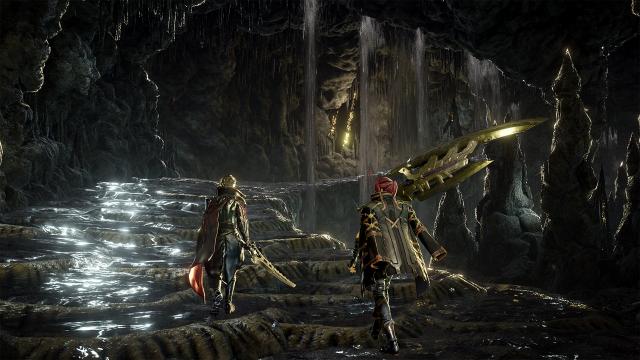
The main gameplay loop in Code Vein will be incredibly familiar to those who have played any other souls-like game. You’ll traverse a dangerous area until you find the next mistle to rest at. During your trek to the mistle you’ll acquire haze from the enemies you defeat. Haze is the currency of this world - it’s used to level up, learn new abilities, or purchase and upgrade items. Death means you lose all your currently held haze, but if you can return to the area where you died you can recover all of your lost haze. If you don’t survive your way back then it's lost forever. The combat is a bit more aggressive than many of its contemporaries, with more focus on attacks and dodging than straight up guarding. These are the things Code Vein straight up copies from others. This is a great gameplay loop, though, and not a slight on the game.
The new ideas added to this well established framework are what really worked for me. Ichor is your MP gauge for using gifts. Each standard weapon strike on a foe refills 1 point to your Ichor meter, allowing for a fair amount of reliance on your gift using as long as you take down the occasional enemy with your standard weapon. There is also a focus gauge, which builds as you take damage or successfully dodge enemy blows. When active it grants access to launch an enemy into the air as well as temporarily buffs several attributes. This is intended as a saving throw, incase you take a nearly deadly blow and need a chance to strike back or escape.
Each Revenant in the game has a Blood Code assigned uniquely to them. This would be something like a class in most other games (fighter, mage, ranger type stuff). Your character has no Blood Code of their own, so you’re able to fuse other Revenants' blood into your own body in order to access their innate gifts. Over the course of the game you’ll find many opportunities to add extra Blood Codes to your arsenal. Once you’ve used a Blood Code for long enough you can permanently learn that Blood Code and then mix and match it with other previously learned gifts. These gifts are both passive and active in nature. Passives act as boosts such as stat increases, enhanced resistances, or altered healing abilities. Active gifts are things like elemental spells, traps, special weapon attacks, buffs/debuffs, and a ton more.
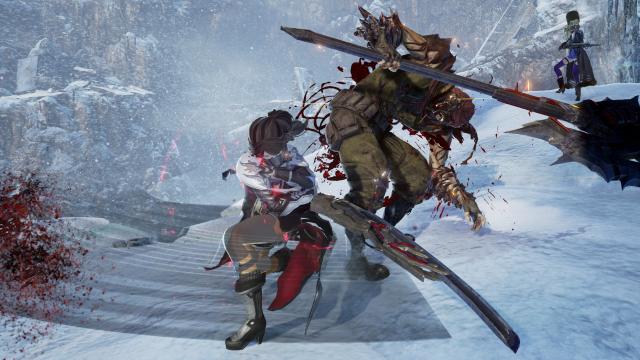
There are some very refreshing builds available to the player. For example a relatively early one called Darkseeker grants you various venom infused attacks and traps, but also a passive ability to regain more spell casting by doing damage with venom based attacks. It’s a neat circle that encourages you to set traps and poison enemies in order to set more traps and poison more enemies. With the ability to permanently learn gifts the combinations are nearly endless with over 200 different gifts available to learn.
The variety of weapons is fairly limited here, but all five weapon types have their own special identities. The ability to swap between any two with the push of a button keeps your options open for different styles of encounters. I typically tend to favor slow heavy weapons and gravitated towards the massive warhammers, but was often grateful to have a bayonet rifle on me for faster or more distant foes. Each weapon has regular and heavy attacks to it, as well as a charged strike. It’s often the Blood Codes that really make your weapon of choice shine, though, as there are many active gifts to equip that are specific to each weapon type. These could significantly alter your offensive abilities in a variety of combat scenarios. Since you never stop learning new Blood Codes throughout the game the action and experimentation is kept fresh right through to the end.
Another exception to the typical formula is that through the entirety of Code Vein you’ll find yourself accompanied by an AI controlled companion. There are 7 available companions, each with their own Blood Code, weapons, and gifts. After finding each companion you're able to freely swap between them at will. If you’d prefer to get right into the fray and have your companion hang back with ranged attacks and supports then Mia may be a good fit for you. If you prefer to have your friend soak up the brunt of the close range battles as you set traps or buffs from a safer zone, Yakumo could be your man. In any regard the companion feature is yet another way the combat feels much different than a lot of other souls-like games. With a constant ally, no longer are groups of enemies easily overwhelming, and many one on one battles can feel fixed in your favor. If you choose to take your game online you can also send out a distress signal that recruits a second human controlled companion to help you out. They get scaled to your level and cannot pick up key items, but otherwise function as the main player character does.
Encounters are designed with this in mind, however, and for all of the manageable solo encounters there are just as many arranged to test you against small swarms of different styles of enemies. One of my favorite types of encounters are sprung as surprises when nearing a valuable item or chest. You’re be informed on screen that the Lost are invading the area and wave after wave of enemies in groups of three will descend upon you. These are not fights you can run from or around; you're forced to deal with them until they simply stop coming at you. These engagements are often a test of resource management as much as your fighting proficiency. They're always worth seeking out, however, as the rewards they protect often compensate you with new gifts, advance your healing abilities, or offer up new weapons and armor.

The bosses are what you’d expect, again in a good way. They're diverse, challenging, and compelling (both in terms of battling and from a story perspective). Much like the Dark Souls games, at first glance these terrifying monstrosities just seem like twisted monsters blocking your path. After advancing the story you’ll find that most, if not all, are much more tragic figures than they first appear. During the back half of the game you’ll be given the choice in how to deal with each of these beasts after defeating them, which will help determine which ending you’ll be subjected to before the credits roll. The fights themselves were fun testing grounds for me to trial the gifts I had been acquiring in the areas leading up to the battle. I came to appreciate each loss as I would learn how many combinations of gifts could be beneficial for various future encounters.
World design bounces back and forth between bleak and vibrant. Some areas are decimated cities, while others are dazzling snowy mountain peaks. Some are towering castle spires built entirely from thorns, while others are swampy wastelands thick with fog and a challenge to navigate efficiently. One of my favorite areas in the game was an abandoned rundown desert city that was being overwhelmed by sand. It was glistening and gorgeous and just a pleasure to explore. Beyond the striking visuals the areas were all engaging to explore. Some areas use straight forward design, moving from point A to point B, but many levels are laid out in a far more intriguing way. Solving locked door puzzles, knocking down out of reach ladders, or activating elevators to loop back to previously found resting points is a staple of souls-like design and a welcome addition to the pantheon of borrowed ideas.
One of the strongest features of the game is the Home Base, a hub that allows you to interact with an extensive amount of activities. There is, of course, a mistle placed here that allows you to travel to any other area where you've activated a mistle. All of your potential companions are hanging out here to talk to, recruit, or exchange items with as well. The game’s basic merchant is located here, as is the equivalent of a blacksmith to upgrade or transform your weapons and armor. There's also a map area that tells you which area to explore next to progress the story. This is a big game, with a lot to easily get sidetracked with, so it's nice to get that gentle reminder of where to go next if necessary. If you're not totally satisfied with the character you created at the start there's even a mirror that you can interact with to redesign any part of your character that isn’t structural (colors, hair styles, accessories, clothing, and the like) without penalty. You can save these looks too and swap back to older styles just by revisiting the mirror and loading them up.
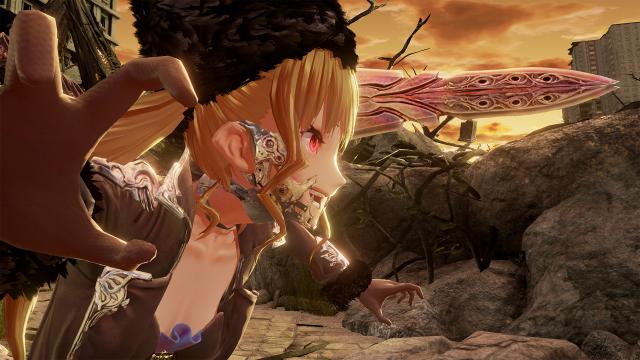
Another wonderful quality of life feature here is the stereotypical anime hot springs. When I first entered it I definitely thought “oh no, here comes the obligatory pervy hot springs scene”. I was pleasantly surprised that, instead, it was a quiet tasteful area of retrospection. In the hot spring you can pull up a short recap of the story beats of the game as well as a small background blurb on the areas you’ve visited. It’s a long game and there is a lot to take in by the end so I used this feature a few times to make sure I had a firm grasp on the narrative. In addition to that, if you died somewhere on your quest and don’t feel like you can safely recover your lost haze you can rest at the hot springs to freely recover half of your lost haze. While I never did end up using it for this purpose it seems like a nice idea for less patient players.
Your earliest companion, Io, lives at Home Base and can be used to restore vestiges you find during your travels. These vestiges are forgotten memories of Revenants. They unlock valuable back story and character motivation, as well as those sweet sweet new gifts for you to exploit! Vestiges are always worth going out of your way to obtain as they not only open up new gifts to add to your arsenal, but they fill in many important and flavorful mysteries regarding the world, its characters, and the catastrophe.
They are, however, told in an incredibly monotonous fashion. Each time you restore a vestige, which is done dozens of times throughout the game, you're brought into a dark version of someone’s memories. You walk incredibly slowly from one end to the exit while eavesdropping on grey, lifeless versions of the characters as they have small conversations with each other. It’s a very bland setting that is charming only the first couple of times, and is repeated far too often thereafter. If you leave the game sitting for a minute on the title screen before starting the game you’ll be treated to a pleasant little anime video with some scenes from the game charmingly drawn out. If the vestige memories were displayed in a similar fashion I would have looked forward to them, rather than dreaded them by the end.
During your travels there are rare maps of special areas referred to as the depths. By giving these maps to a character called Davis you’ll unlock short challenge areas that house some decent rewards, side quests, and refights against the game's bosses and tougher enemies. These are not necessary to complete in order to beat the game, or even flesh out the story. They're simply there for the reward and challenge for players looking to engross themselves further Code Vein. Once you’ve recruited all of your companions the Home Base feels alive and important, and I made use of every single feature available in it at some point during my playthrough. It’s a pretty fantastic hub and made a very positive impression on me.

The sound in Code Vein is more of a mixed bag. The voice acting is very competent and I found the in-game banter from your chosen AI companion to be mostly welcome, rather than distracting. On the other hand though the cutscene dialogue is fairly graceless. It doesn’t cross over to the “so bad it’s good” territory, either, so instead what you're left with are a lot of disjointed conversations between Revenants. It doesn’t make the story hard to follow, more like it just needed an editor to cut to the point a lot of times. Thankfully the game’s music is tremendous. From the beautiful and intense open title song I felt like I was going to be in for a treat and the rest of the game did not disappoint. There are a lot of moments when the music intensifies or hits a somber tone at just the right time and I could feel the intended sensation surge through my body. Songs like the haunting Requiem, the whimsical March of the Lost, and the forceful Colossus have even made their way onto my playlists outside of the game.
Playing on a standard PlayStation 4 system I did encounter some minor tech issues. Early in the game I experienced some texture pop in on my character and my companion. By the end of the first chapter that issue seemed to disappear, never to re-emerge. Alternatively in the very final chapter of the game there were a couple of encounters that caused the game’s framerate to slow to a crawl momentarily. Depending on which weapon and armor you have equipped there may also be some object clipping issues during cutscenes, but nothing majorly distracting. Gameplay wise the game ran incredibly smoothly, even on the dated version of the hardware.
My only design issue was not being able to scroll around the in-game map. When pulling up the map by using the options button the only things available to do with it are zoom in on an area centered around your current location or zoom out. There were many times I wanted to move the map manually to mentally route out an unexplored area, but instead had to just shut the menu and go in blind and frustrated.

Code Vein is far from bustling with life and NPCs, but by revisiting a previously conquered area you’re more than likely to run into one or two new characters. These NPCs move around between the different areas, offering up additional quests to challenge you and flesh out the lore, as well as offer up even more special items. These sidequests, along with multiple endings played out by your binary choices during the game, make it impossible to finish everything in a single run. As is standard in the genre there's a New Game+ mode for the completionist in all of us. You’ll keep your level, Blood Codes, companions, maps, and most items (key items return to their original locations), and you'll be asked if you wish to replay on the base difficulty or increase the challenge level.
If you’re the type who has always been scared off by the perceived difficulty of a souls-like game this may be the one to try. It is considerably more forgiving than any other game of its style that I’ve played. That’s not to say there's no challenge, just that it’s toned down considerably. Having a constant companion (or two) with you is a huge boon, as you can strategically retreat to heal and regain your bearings at any time while enemies focus their attention on your ally.
The game is extraordinarily generous with its rewards as well. Haze is never in short supply, so even if you die and you’re not up for recovering what you lost don't sweat it; you’ll be back into riches before you know it. Weapon and item drops are plentiful and useful, so don’t feel like you need to horde things for later encounters, as you’ll find more or can purchase most items from the shop. I finished the game with only a slight amount of grinding - in order to master a few late game gifts - and was at a beefy level 185.

This is a stunning take on a tried and true formula. It keeps the core of what makes souls-like games work and piles on several successful layers of experimentation. Between the character creation tools, companions, and Blood Code system it may even be unmatched in terms of customization. There are systems built in to help players succeed, but not at the loss of that coveted genre challenge, and the visuals and story are top notch. Anime Dark Souls shouldn’t be a derogatory term, because that's exactly what Code Vein proudly is.
This review is based on a retail copy of Code Vein for the PS4Read more about our Review Methodology here
More Articles


















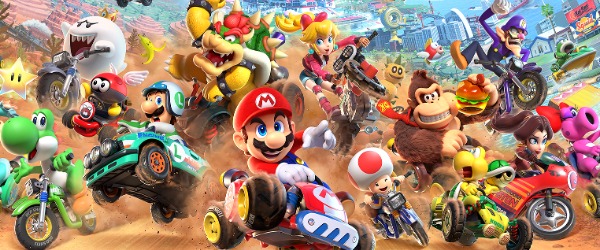














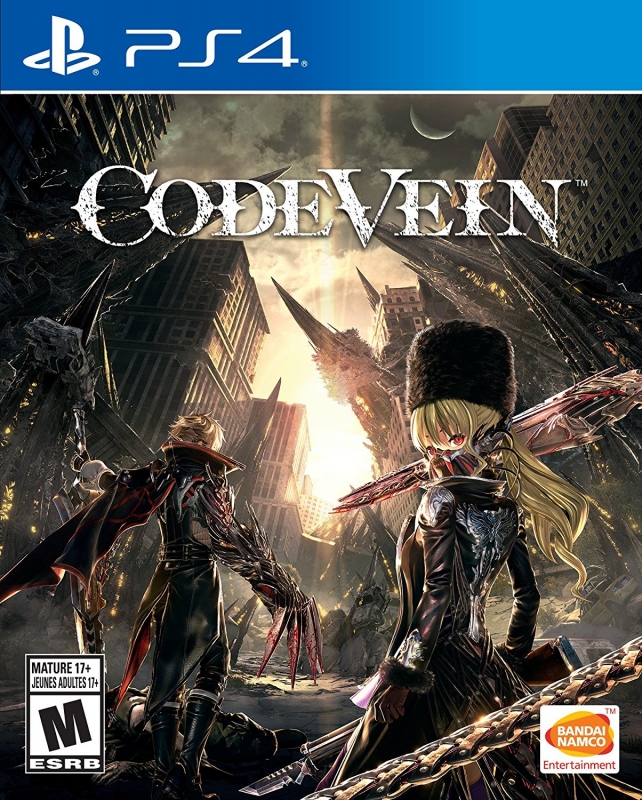



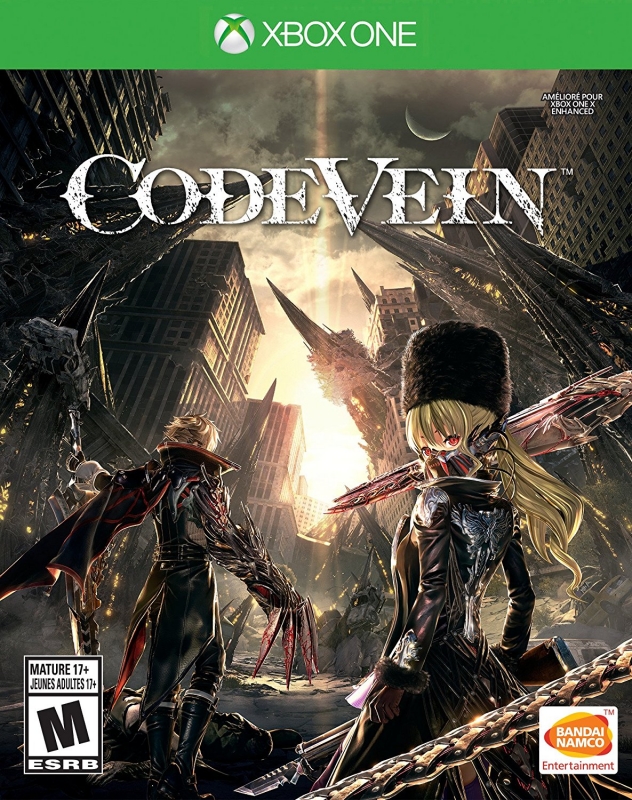

 Essay Pro
Essay Pro